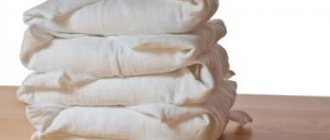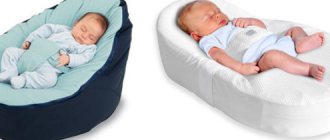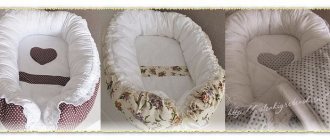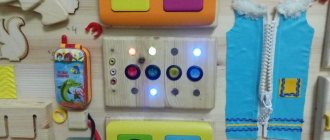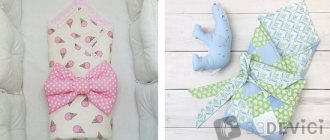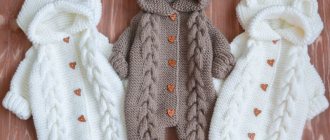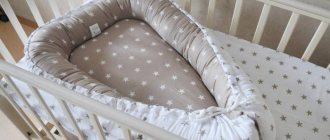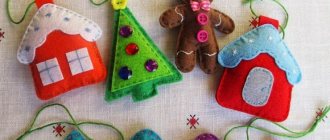With the appearance of a child in a family, its members receive a lot of troubles and responsibilities. So, first of all, the baby should be well-fed and well dressed. In this case, he will be comfortable, and the new mother will be twice as calm.
Nowadays, the creators of children's products offer many different diapers. These can be products with Velcro or in the form of panties. They are suitable for single use. After use, such a product is thrown away. You can also purchase reusable panties with special inserts. The inside of such a diaper is pulled out and goes into the wash.
Many mothers use grandma's methods to help them save money. Our article will tell you how to create gauze diapers with your own hands from different materials . These products can be used several times. All you need to do is wash the fabric and dry it.
What it is
Gauze diapers are an excellent alternative to store-bought diapers. They are good because they allow the baby’s skin to have maximum and complete rest compared to diapers made of synthetic materials. In addition, this is the main classic baby hygiene product made from natural materials. Suitable even for baby's sensitive skin.
DIY diapers
At the same time, it will be very simple to make such waterproof pads, asking yourself the question of how to sew gauze diapers for newborns: just take good quality pharmaceutical gauze and wrap the baby with it using one of the popular techniques.
Gauze blotters
Gauze diapers
Gauze diapers have both their pros and cons. Unlike diapers purchased with special filling inside, gauze fabric absorbs moisture much less, and they must be changed very often, up to twenty times a day. They will have to be washed every time, and for newborn children, they will also have to be ironed. If a child remains in a wet diaper for a long time, for example at night or while walking outside, this will lead to irritation and redness of the skin.
Many parents refuse gauze cloth diapers because they will have to swaddle their baby many times at night. As a result, both mother and little child do not sleep all night. Some parents use them only during the day, and at night they put purchased products on the child.
Advantages and disadvantages
Like purchased models, homemade ones have advantages and disadvantages. On the positive side, it can be noted that in this way there is a saving on costs, since one gauze pack is enough to make 25 products. In addition, similar products:
- help the skin not to warm up or become hot;
- are absolutely environmentally friendly and safe for children;
- suitable in volume, since each is made for a baby;
- wears off very quickly.
Note! You can sew reusable diapers with your own hands, but it is worth noting that such products are fixed quite tightly, irritate the skin, and if they are wet, they leak. Therefore, they need constant washing and changing; it is impossible to go out for a long walk.
Using a bandage
Gauze diapers for a baby can be made from a simple bandage . Essentially, this is the same gauze. However, they have completely different sizes. Remember that such a product will not last you long. It can be used in emergency cases when all supplies have run out.
Take a roll of bandage and unroll it. Let's cut about three meters of material and fold it in half several times. Due to the fact that all bandages are sold in sterile form, such a diaper does not need to be washed or ironed beforehand. Place the created rectangle between the child’s legs and secure it with the same elastic band or panties. So we looked at the topic of how to make reusable diapers with your own hands. Now let's move on to the pattern.
Is it possible to do without diapers?
You can do without homemade diapers by replacing them with store-bought ones. However, according to the results of many surveys of married couples, prolonged wearing of purchased products causes diaper rash with allergies, itching and addiction. Interestingly, many manufacturers are already creating gauze, soft and comfortable patterns. For example, this is the company Octopus, Vitosha and Our Mother. It is worth noting that their products are in demand.
Popularity of Octopus products
Gauze blotters come in different sizes for girls and boys. There are basically three types of products that can be sewn depending on how much the baby weighs and how many months he is:
- For infants up to one month and up to 5 kilograms, products with a diameter of 60 centimeters are suitable
- For children from one to three months up to 7 kilograms, blotters with a diameter of 80 centimeters are sewn;
- For children from three months to 9 kilograms - ordinary products with a diameter of up to 60 centimeters, 180 by 90 according to the headscarf and 90 by 90 according to the Hungarian method.
Note! It is worth noting that the size will depend on the characteristics of the child and the characteristics of his development, physique, and waist.
Diaper sizes
The size of gauze diapers varies depending on the weight and age of the baby.
- For newborns (up to 1 month) weighing up to 5 kg – 60/100 cm.
- For children from 1 to 3 months weighing up to 6.5 kg – 80/100 cm.
- For babies from 3 months and weighing up to 8 kg – 60/100 using the “rectangle” technique, 180/90 – “kerchief”, 90/90 – “Hungarian method”.
The size of the fabric product is influenced by the individual developmental characteristics of the child, his physique, waist size, and butt.
Types of fabrics
It is worth noting that gauze is not the only material from which blotter cloths are made. As a rule, other fabrics such as chintz and flannel are also used for this purpose. Chintz is a material that does not cause allergies. Refers to natural and breathable materials. Flannel is a cotton fabric that is pleasant to the body. Can absorb moisture well. Suitable for even the most delicate baby skin. The last material, namely madapolam, is a dense gauze composition that does not contain dyes that cause allergies.
Flannel as a type of suitable fabric
DIY sewing
To make a disposable diaper, you need to take one of the listed materials and a thread threaded into a needle. Next you need to follow the diagram below:
- Cut the fabric to the appropriate size for the child’s age and parameters;
- Overcast the fabric edges and fold them one to two centimeters on each side so that the fabric does not fray or unravel, and the product becomes reusable;
- Fold the fabric in half to form a square and turn it over with the fold down;
- With your left hand, move the edge from below to the center and turn the workpiece over to the other side, wrapping it in the same way;
- Sew up the curves of the workpiece for more comfortable wearing.
Folding techniques
There are three methods on how to roll gauze diapers. They can be made using the Hungarian method, a scarf and a rectangle.
Hungarian method
It consists of turning waterproof rags into panties. The method involves folding the gauze or fabric in half, folding the corner again from left to right to the top corner to make a triangle, and flipping the piece back over to make a triangle.
Hungarian method
According to the scarf technique, you need to fold the cut into a triangle, spread it out and lay the baby on top. Next, you need to lift the bottom corner up and connect the side corners so that they do not come undone.
Rectangle
There are two ways to roll using the rectangle technique. In the first case, you need to make two strips of fabric, put them on top of each other, and then place the child on them so that half of the homemade panties protrudes. Then you just need to bring the bottom part up to your waist and tie it with a ribbon. According to the second method, you need to make a belt for such panties by placing ribbons inside the product.
Rectangular method
Types of diapers and their manufacture
There are three rolling techniques: rectangular, triangular (kerchief) and Hungarian diaper. For the first two, a rectangular piece of gauze fabric will suit you, and for the third option it is best in the form of a square.
Rectangular diaper
A very simple technique to make a rectangular diaper at home. We roll up the required piece of rectangular fabric. Fabric with dimensions (60 × 100), or possibly larger (60 × 120), is folded several times to form a rectangle twenty centimeters wide and sixty cm long. The edges of the material are folded towards each other so that the seam is inside.
When you swaddle your baby, the rectangle is under the back, goes between the legs and wraps around the stomach. For girls, a large section of the diaper is placed in the back, while for boys it is located in the front. This option is suitable for little ones who cannot walk. Older children who are already walking will simply crush it because it is not attached in any way.
Sometimes people ask whether it is possible to sew the fabric in the form of a rectangle so that you don’t have to fold it every time. This should not be done for several reasons. The stitches will cause a lot of discomfort to the child. The sewn diaper is multi-layered and will take a long time to dry after washing.
Disposable gauze - and there is no need to stitch or sew at all, since it will have to be thrown away after the first use.
Triangular diaper
An overcast triangle is made from gauze fabric. Overcast fabric with dimensions of 90x180 cm is folded in half exactly in the middle so that a square piece is obtained. After the square is made, it is folded diagonally to form a triangle.
When swaddling a baby, the diaper is placed so that two corners are on opposite sides, and the third is facing down. The corner is placed on the stomach and passed between the legs. The corners on the sides are folded around the waist and secured. It is attached as follows. You need to tuck the end of the fabric into your belt, but do not tie it.
Diaper in the form of panties
To make a “Hungarian” diaper, you only need a couple of movements. Any mother who has done this procedure once can repeat it again.
Fabric in the shape of a square (80x80 or 90x90) is folded in half. One of the formed corners is moved to the other side so that the center of the side cut lies opposite the middle of the top. For example, the upper corner located on the left is moved to the right without lowering it down. At the same time, the lower corner on the left side is folded in half, and you get a triangle that lies on top of the square.
The diaper is turned to the free side in a vertical plane like a pancake. The other side, which formed a square, is folded a couple of times, and you get a triangle with a stripe in the middle. It is put on a child in the same way as a headscarf. It is distinguished by a denser layer of gauze. This diaper is suitable for both large and small children.
Manufacturing of waterproof liners
All that is needed to make waterproof liners is to sew a flannel or bamboo measuring 30 by 40 centimeters and put them under the child’s regular panties. As a rule, you need to fold the fabric 3-4 times so that it absorbs more liquid. Be sure to iron all items before use.
Waterproof liners
Washing and care
Washing and caring for reusable blotting cloths is very easy. It is enough to regularly wash them by hand without bleaching agents in ordinary laundry soap, and then dry them on a radiator or clothes dryer. Before use, iron items on both sides.
Washing and care
Sewing gauze diapers for newborns step by step is not as difficult as it might seem. Gauze is a natural and breathable material that will allow the baby’s bottom to breathe and not sweat. You can make such reusable or disposable blotter cloths using the technology presented above. They are easy to wash and care for. It is enough to periodically wash with soap with your own hands.
How to sew reusable diapers with your own hands?
Recently, reusable diapers have become an alternative to disposable diapers. After all, our mothers and grandmothers used these diapers. Only they made reusable diapers for newborns with their own hands, but modern manufacturers produce improved models and they are not cheap. But even with minimal knowledge of sewing, you can sew a diaper yourself.
Advantages and disadvantages
The advantages of homemade diapers are, first of all, saving money. They are well ventilated and do not cause allergies. If you make about twenty pieces with your own hands, the costs will be minimal, and they will last you a very long time.
Any adult can make this type of diaper for newborn babies. Children, as a rule, are not allergic to them because they have good breathability. Very often our grandmothers advise inexperienced parents just such products made from gauze fabric.
How to sew a reusable diaper with your own hands?
Before you start sewing, you need to figure out what parts the diaper consists of. These are panties and liners. To sew panties, use cotton, flannel, or fleece, which will come into contact with the baby’s delicate skin. For the absorbent layer (liner) you will need microfiber and gauze. To secure the diaper, snaps, Velcro, and buttons are sewn on.
For the panties you will need two pieces; when cutting, you need to leave allowances for the seams. The cut out parts are placed right sides to each other and stitched without sewing up the pocket for the inserts. An elastic band is inserted into the waistband and along the legs. The diaper is turned inside out and the fasteners are sewn on. A microfiber or gauze insert is inserted into the pocket. The product is ready.
Sewing reusable diapers yourself has its advantages:
- saving money. Pampers or store-bought reusable diapers are quite expensive;
- environmental friendliness. The natural materials from which the diaper is made will not harm the baby’s skin;
- absence of fragrances will protect the skin from an allergic reaction.
Reusable diaper pattern
The pattern for sewing a diaper is very simple, just take a disposable diaper and trace it with a pencil. Reusable models can be used from birth to 2 years. Therefore, diapers must be sewn according to the baby’s size. Reusable diapers have 3 sizes A, B, C, but if you focus on diapers, there may be more.
Models are sewn depending on the weight of the child. You can make a universal diaper - this is a product with buttons or Velcro that adjust the size.
Using a pattern, you can sew a reusable diaper for newborns with your own hands, even if you have basic sewing skills. First, you need to decide what size the diaper will be and what material it will be made of.
The diaper is ready, all you have to do is insert the insert and put it on the baby.
Pattern of a reusable diaper with Velcro. A very comfortable Velcro diaper model. To sew a reusable Velcro diaper using a pattern, you need to do everything the same as when making a simple diaper. The sequence of actions is maintained. A distinctive feature will be sewing Velcro, 18 m long, to the front side (on the tummy). For fastening, 4 pieces of Velcro (2 on each side) are attached to the inside side.
- Take a diaper or a finished pattern and apply it to the fabric folded in half. Trace with a pencil and cut out. One piece can be made of cotton or flannel, and the second one can be made of mesh for the inner layer. When cutting, leave seam allowances of 1-1.5 cm.
- The parts are sewn facing each other, leaving unstitched space for inserting the liner.
- On the waistband, on the back side, we leave a drawstring to sew in an elastic band.
- Sew the elastic along the legs, on the back side of the part.
- Turn the product inside out.
- On the front side, on the tummy, at pre-marked points, you can sew buttons or snaps.
How to make reusable diapers with your own hands? Cutting and sewing reusable diapers is an easy task, even for inexperienced seamstresses. It is quite possible to sew reusable diapers with your own hands, simply using a disposable diaper as a basis. A pattern is made from it, 2 parts are cut out (external and internal), and sewn together.
A pocket is specially sewn or left for the liner. Velcro, buttons, snaps are used for fastening. If difficulties arise, a master class on sewing reusable diapers will be useful.
Material processing
How to make gauze diapers for your baby with your own hands? First you need to properly treat the base. It doesn't matter what you took as material. Of course, it should be a loose, soft and comfortable fabric. It is also worth taking a perfectly absorbent base.
- Cut the gauze or other material into a couple of square pieces. The size should not be large or very small. If you take gauze, then you need to fold it several times. In this case, you need to create a blank with sides of at least 70-80 cm. When choosing cotton or linen with a stronger structure, you can cut a square with a length and width of 50 cm.
- Before making gauze diapers for a child, you need to process the material well. This should be done a couple of days or weeks before giving birth. In this case, you will have a blank that can be used immediately. Wash the material with the addition of baby soap in hot water. Many today's mothers take an automatic machine for this. Let's dry and iron the product with our iron. You also need to practice rolling this product. There are several options for creating gauze diapers for a newborn. Let's sort them out.
Product “Scarf” master class.
How to create gauze diapers for a baby in this way? Everything is very easy. Let's fold a huge square of gauze in half. Let's repeat the steps again. In the end we should have four layers of material. Fold the workpiece diagonally to form a triangle.
Fold the diaper with the blunt tip facing toward you. Let's place the child on it. We will place the blunt end of the product between the newborn’s legs and place it on the stomach. We tie the sides together in the navel area. They can also be easily tucked inside.
Tulle skirt

